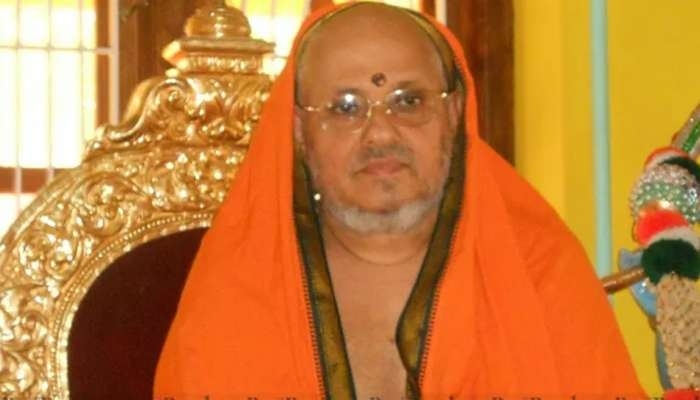of “spirit”
| Date :08-Sep-2020 |

THE passing away of Seer of Edneer Mutt Shri Swami Kesavananda Bharati due to old age brings alive memories of an epic legal and constitutional battle that he initiated nearly half a century ago. His awareness of citizens’ rights and alertness to initiate action to safeguard those made a critical difference to the way nation should think about primacy of judiciary -- especially the honourable Supreme Court -- as the custodian of the basic features of the Constitution.
The actual details of outcome of the famous case apart (as Shri Swami Kesavananda Bharati did not get the relief he prayed for), it nevertheless made it clear that no institution has unfettered right to toy with the Constitution which may be amended without damaging its basic structure. The nation will ever remain grateful to that epic battle and the person who took on a subject that in those days seemed so much out of reach for the common man. Much water has flowed in the Ganga since then, and the issue of what should be considered the “basic structure” of the Constitution has been discussed from multiple angles. Though a lot of that discussion has been mere lip service, the nation knows with a greater clarity that the Constitution is the actual holy book of modern India.
However, there still are a few nuances that the nation has failed to discuss threadbare, even though it claims to have done that. In the past several decades since the Kesavananda Bharati case, the issue of “basic structure” came up for serious debate time and again. For reasons best known to the best legal and constitutional and political brains in the country, the nation missed marking the actual distinction between the basic “structure” and the basic “spirit” of the Constitution. Even as the nation pays homage to Shri Swami Kesavananda Bharati, it may pick up the debate from where it was left only partially settled. In the past seventy years since the Constitution was adopted, needs of changing times mandated amendments to the document on several occasions. More than a hundred amendments so far have established the dynamic nature of the document as a living book.
Given this reality, how far can we claim that the nation has retained the basic “structure” of the Constitution, is the question that needs a serious scrutiny. As against this, it may be easier for the nation to say that no matter the changes, the basic “spirit” of the Constitution has been retained. Some sections may suggest that the debate between “structure” and “spirit” pertains mainly to nomenclature as the nation has understood the core principle correctly. However, a deeper thought will yield that this is not a debate of nomenclature -- between “structure” and “spirit” -- but an issue of the choice of right expression that is so vital and critical to understanding the essence of constitutionality and legality. Universal wisdom suggests that the “spirit” of law is more important than the “letter” of law.
In a way, the issue thus already stands settled in favour of “spirit” -- which is metaphysical in nature -- and not “structure” -- which is physical in nature. The intention here is not to raise a non-issue; the effort is to find a right expression that would endure itself through changing times from now on as well. There is a via media, too, available to us to steer clear of the rational confusion. Instead of using the word “structure”, we may start using the word “feature” which suggests an inclusive expression of physical as well as spiritual nuances -- that will highlight the dynamics of how the constitution operates both, as a document and as a guiding theology.
As the nation pays homage to Shri Swami Kesavananda Bharati, it may be the right time to consider more deeply if that epic moment of the past can be reincarnated with a deeper and more vigorous etymology that would add greater value to the sacredness of the Constitution as India’s holy book that acts as a lighthouse for the ship of democracy through the unavoidable turbulence of changing times needing more dynamic definitions.